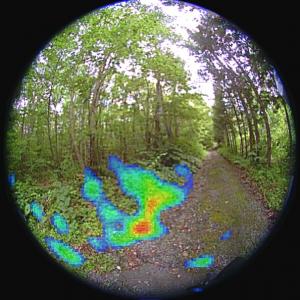Gamma ray camera may help with Fukushima decontamination*

The new Compton camera incorporates high-accuracy, three-dimensional, gamma ray position measurement technology developed at Waseda University. Copyright : Waseda University
Based on a high-sensitivity mobile gamma ray camera released by Hamamatsu Photonics in 2013, the new Compton camera incorporates high-accuracy, three-dimensional, gamma ray position measurement technology developed at Waseda University.
Led by Professor Jun Kataoka, the Waseda team improved the original camera’s resolution by about two times and enhanced its sensitivity by approximately 70%.
The new technology enables the smooth and accurate visualisation of gamma rays, which are invisible to the human eye, and could be used to help with the removal of radioactive substances from the Fukushima Daiichi nuclear accident.
The Waseda team is now working to make the detector even lighter and smaller: only 500 grams or less in weight and about 10 cubic centimetres in size.
Professor Kataoka plans to use the detector to advance
research on bio-function dynamics imaging and proton therapy.
For further information contact:
Professor Jun Kataoka
Research Institute for Science and Engineering
Waseda University, Japan
E-mail: kataoka.jun@waseda.jp
*This article also appears in Asia Research News 2015 (p.10).
Media Contact
All latest news from the category: Power and Electrical Engineering
This topic covers issues related to energy generation, conversion, transportation and consumption and how the industry is addressing the challenge of energy efficiency in general.
innovations-report provides in-depth and informative reports and articles on subjects ranging from wind energy, fuel cell technology, solar energy, geothermal energy, petroleum, gas, nuclear engineering, alternative energy and energy efficiency to fusion, hydrogen and superconductor technologies.
Newest articles

Properties of new materials for microchips
… can now be measured well. Reseachers of Delft University of Technology demonstrated measuring performance properties of ultrathin silicon membranes. Making ever smaller and more powerful chips requires new ultrathin…

Floating solar’s potential
… to support sustainable development by addressing climate, water, and energy goals holistically. A new study published this week in Nature Energy raises the potential for floating solar photovoltaics (FPV)…

Skyrmions move at record speeds
… a step towards the computing of the future. An international research team led by scientists from the CNRS1 has discovered that the magnetic nanobubbles2 known as skyrmions can be…





















